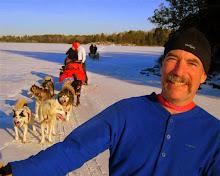What is the place for reverence in viewing "the wonders of the natural world"? Pantheism, the worship of nature, is what many fundamentalist Christians would call showing excessive attention and concern for the fate of the flora and fauna of natural areas. The Christian Bible cautions the believer to worship the Creator, not the creation. The person who doesn't believe in God (or Jesus Christ as the son of God) is termed a pagan and is to be pitied and if possible shown "the only true way of the cross of Christ." There is some room in more liberal churches for those who want to practice "creation care" but for those who follow the fundamentalist church the creation care movement is suspect for offering allegiance too closely to nature's creatures rather than Creator.
Rick Bass, a leading writer and environmentalist, who lives in a rural area in northwestern Montana, addresses the question of reverence for the creation, as put to him by some seemingly Christian "friends" in his community. His answer, in the following essay, told after an encounter with a female painted turtle, is both humble and wise.
This essay was in the May 2009 issue of the Shambhala Sun Magazine
The Turtle
by Rick Bass
Surely I am becoming a pagan; and not through any formal rejection or even dubious re-examination of the mystery of my childhood, Christianity, but more through the evolution of some closer fit between my spirit and this
I’m not even sure what a pagan is exactly—perhaps I’m misusing the word—but yesterday, after I had dropped the girls off to play at a friend’s house over on the backside of the valley, just across the state line, in Idaho, I encountered a painted turtle crossing the gravel road, traveling from one marsh to another, and my spirits soared, at the life-affirming tenacity of her journey, her crossing, as well as at this most physical manifestation that indeed the back of winter was broken; for here, exhumed once again by the warm breath of the awakening earth, was the most primitive vertebrate still among us.
It was not a busy road, but I stopped anyway and picked up the turtle. Her extraordinarily long front claws, so like a grizzly’s, confirmed that she was a female—the longer claws are useful in excavating a nest in which to lay her eggs—and I put her in a cardboard box to show the girls upon my return.
I continued on my way, down across the giant
We kept watch over her then, as she slithered her way through last autumn’s dead grass, and the newly emerging green-up, toward the cattails and chilly dark waters that would receive her and the future of her kind.
I hoped the specific tone of sky at dusk, the call of snipe circling overhead, and the shapes of these specific mountains—these mountains—were imprinting themselves, this one April, as deeply in the minds of my young daughters, along with this leisurely, almost nonchalant yet considered act, as deeply as the chemistry of a river is said to imprint itself upon the bodies of young salmon. These are the sights and scents and tastes and sounds and textures, the logic and the reason, that hopefully will help form the matrix of their childhood and their individual characters.
I’m grateful to that one turtle for the opportunity to help show them consideration. I’m grateful to the color of that sky at dusk, and to the unique and specific shape of Haystack Mountain, to the north, and to the scent of the pine and fir forests, early in the spring, for helping form that calming matrix, as sense-filled and tangible as a bough of fir branches spread beneath one’s sleeping bag on a camping trip far back into the mountains, the mythic mountains of childhood.
We stood there and watched her clamber on down into the dark waters. We don’t have turtles in our marsh. Our marsh is one of several in a chain of wetlands that is perched at the edge of an upthrown fault block that parallels the valley’s main river. The closest turtles are but a quarter of a mile away, down in one of the huge wetlands created by the river’s high waters each spring; but there are no turtles in any of the marshes on that shelf up above the valley—the shelf on which our marsh, and several others, is perched.
We are a hundred feet too high, it seems, for turtles—an elevation of thirty-three hundred feet, rather than the valley floor of thirty-two hundred. Maybe, however, the warming earth will allow this marsh to receive them in my lifetime. Or it might take a hundred years, or two hundred, beyond that, but no matter; I dare not tinker with so ancient and established of a species—trying to coax it into a place it might never have been before. Perhaps this kind of reverence, respect and reverence, more than anything else, defines a pagan; I don’t know. Whatever it is, I know that I feel it strongly.
If this kind of attentiveness to, and gratitude for, the creation is excessive, or unseemly in our species, or, worst of all, ungodly, then I apologize for having been snookered by the dark forces; but know that I will go to damnation for having been an ignorant or mistaken man, rather than an evil one.
Some of my neighbors—friends—frown on the zeal, the restless tenor, of my environmentalism. They counsel me that with eternity at stake in the unending afterlife, there is little point or economy in getting so fretted up about clear-cuts when our mortal time here is so temporal, and the earth is but a proving grounds for the far greater and lasting struggle of our souls, our eternal salvation.
And sometimes—when I’m really tired of the struggle—I want to believe them.






